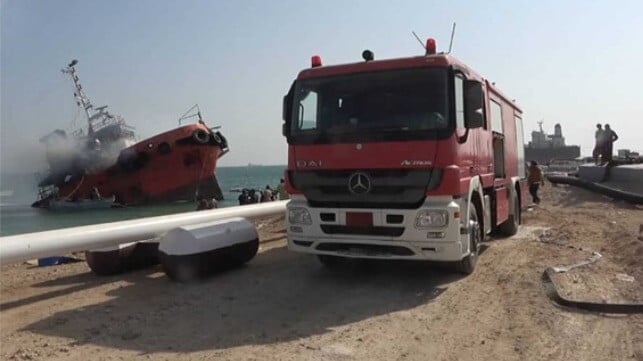UN Confirms Level of Damage to Yemen’s Ports

Officials from the Untied Nations provided the first independent confirmation to the level of damage that has been inflicted on Yemen’s Red Sea ports. The officials estimated that less than a quarter of the port capacities remain available expressing concern about the ability to get relief supplies to the citizens of Yemen.
"(The) impact of airstrikes on Hodeidah harbor, particularly in the last weeks, is very important," Reuters reports Julien Harneis, U.N. resident and humanitarian coordinator in Yemen, told a U.N. meeting in Geneva on Tuesday, January 21. Harneis did not assign responsibility for the damage but warned it would impede the efforts to delivery food and fuel to Yemen.
Reports from Yemen indicate there is about two months of cereal and fuel inventories in the ports. UN officials have been working with the local authorities attempting to maintain aid and had a long-term plan to repair damage to the Red Sea ports which have been under the control of the Houthis for a decade. In approximately 2018, the UN conducted an extensive survey of the port facilities and documents the lack of maintenance and problems that needed to be addressed.
In Hodeidah they are now saying four of the port’s five tugboats were sunk and the fifth damaged. Local officials claim the port’s capacity in Hodeidah, Salif, and at the Ras Issa oil terminal was reduced by 70 percent.
UN officials said the ports had been targeted four times in the past six months. U.S. raids focused on key assets during the long-running conflict in the Red Sea region, while the Israel Defense Force carried two large raids in December.
The Israeli raids were in response to repeated missile and drone attacks launched by the Houthis. On December 19, they were there were a total of seven raids targeting Hodeidah as well as one on Salif and two on the oil terminal. In addition, Israel staged four raids on a power station south of Sanaa and two on another power station north of Sanaa.
The Houthi missile attacks continued and on December 26 the IDF conducted a second wave of attacks. That involved a reported 25 Israeli Air Force planes and included the port of Hodeidah as well as the power station and oil terminal. There was also heavy damage including the control tower, runways, and buildings at the Sanaa airport as well as additional targeting of the power station south of Sanaa.
Local officials are saying a total of eight tugs essential to the port operations were damaged.
"The civilian crews who man them (the tugs) are obviously very hesitant,” warned Harneis. “The capacity of the harbor is down to about a quarter," he added, saying the port was used to transit a significant portion of imported aid.
The Houthis continued to launch missile attacks on Israel through January 18 and the announcement of the Gaza ceasefire. They have however threatened to continue to target Israeli shipping and warned more widespread attacks would resume if the truce is violated.
Harneis told the UN briefing that the danger remains high for additional attacks. He also said it was hampering UN mediation efforts to reach a political solution to the conflict. The Houthi forces seized the western areas of Yemen in 2014 and early 2015.
